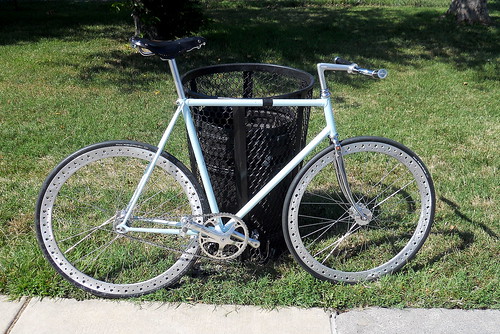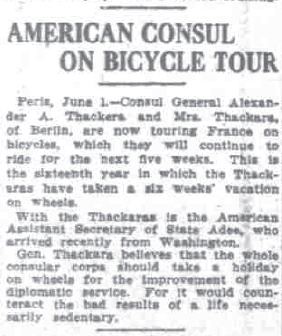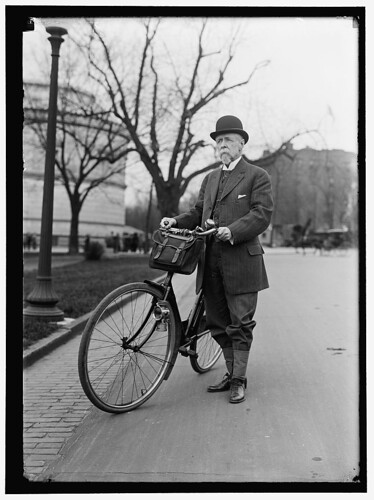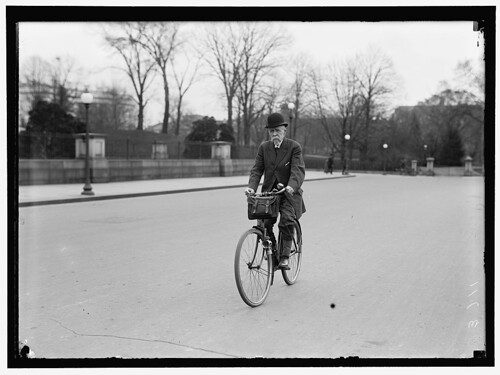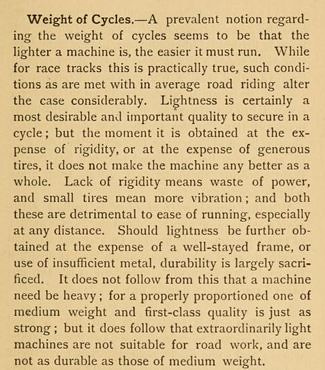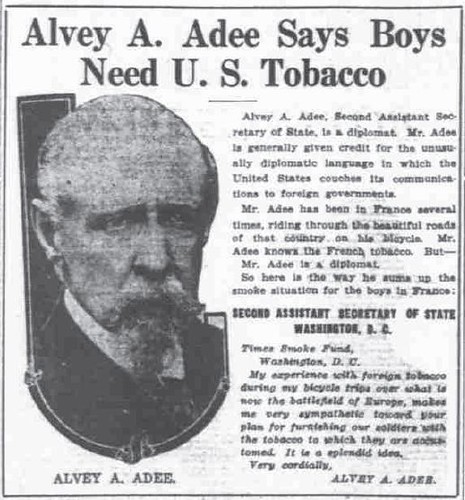
This seems to be an endorsement of a way that The Times supported the war effort (during World War I)
Alvey A. Adee Says Boys Need U. S. Tobacco
Alvey A. Adee, Second Assistant Secretary of State, is a diplomat. Mr. Adee is generally given credit for the unusually diplomatic language in which the United States couches its communications to foreign governments. Mr. Adee has been in France several times, riding through the beautiful roads of that country, on his bicycle. Mr. Adee knows the French tobacco. But -- Mr. Adee is a diplomat.
So here is is how he sums up the smoke situation for the boys in France:
Times Smoke Fund,
Washington, D. C.
My experience with foreign tobacco during my bicycle trips over what is now the Battlefield of Europe, makes me very sympathetic to your plans for furnishing our soldiers with the tobacco to which they are accustomed. It is a very splendid idea. Very cordially,
Alvey A. Adee
